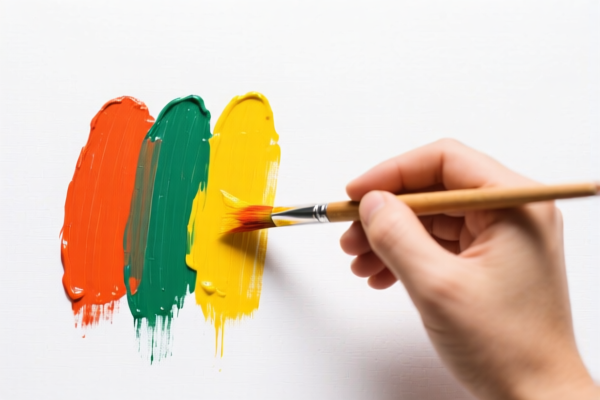| HS Code | Official Doc | Tariff Rate | Origin | Destination | Effective Date |
|---|---|---|---|---|---|
| 3210000000 | Doc | 56.8% | CN | US | 2025-05-12 |
| 3213100000 | Doc | 6.5% on the entire set+55.0% | CN | US | 2025-05-12 |
| 3213900000 | Doc | 58.4% | CN | US | 2025-05-12 |
| 9603402000 | Doc | 37.5% | CN | US | 2025-05-12 |
| 9603302000 | Doc | 40.1% | CN | US | 2025-05-12 |
| 3914002000 | Doc | 55.0% | CN | US | 2025-05-12 |
| 3914006000 | Doc | 58.9% | CN | US | 2025-05-12 |
| 3926100000 | Doc | 35.3% | CN | US | 2025-05-12 |
| 3906905000 | Doc | 59.2% | CN | US | 2025-05-12 |
| 3910000000 | Doc | 58.0% | CN | US | 2025-05-12 |
| 4908100000 | Doc | 37.5% | CN | US | 2025-05-12 |
| 4908900000 | Doc | 37.5% | CN | US | 2025-05-12 |




Painting Supplies
Painting supplies encompass a broad range of tools and materials used to create artwork with pigments applied to a surface. These supplies vary significantly depending on the chosen painting medium and desired effect.
Materials
The core materials in painting supplies include:
- Pigments: The color component, traditionally derived from natural sources (earth, minerals, plants) but now often synthetically produced.
- Binders: The substance that holds the pigment particles together and allows them to adhere to a surface. The binder largely defines the paint type (e.g., oil, acrylic, watercolor).
- Solvents/Diluents: Used to modify the paint's consistency, flow, and drying time. Examples include turpentine or mineral spirits (for oil paints), and water (for watercolor and acrylics).
- Supports: The surface onto which the paint is applied. Common supports include canvas, paper, wood, metal, and walls.
Purpose
The primary purpose of painting supplies is to facilitate the creation of visual art through the application of colored pigments. This can encompass a wide range of artistic expression, including representational depictions, abstract compositions, and decorative applications.
Function
Painting supplies function to:
- Provide Color: Pigments offer a spectrum of hues and shades.
- Enable Adhesion: Binders ensure the paint adheres to the support.
- Control Consistency: Solvents and mediums alter the paint's viscosity and workability.
- Facilitate Application: Brushes, palette knives, and other tools allow for precise paint placement.
- Protect the Artwork: Varnishes and other protective coatings shield the finished painting from damage.
Usage Scenarios
Painting supplies are used in diverse settings:
- Fine Art: Creation of paintings for galleries, museums, and private collections.
- Commercial Art: Illustration, design, and advertising.
- Decorative Painting: Murals, furniture refinishing, and craft projects.
- Hobby & Recreation: Personal artistic expression and relaxation.
- Restoration: Conservation and repair of existing paintings.
Common Types
The following are major categories of painting supplies, categorized by paint type:
- Oil Paints: Utilize oil (linseed, walnut, poppyseed) as a binder. Known for slow drying times, rich colors, and blending capabilities. Requires solvents for cleanup.
- Acrylic Paints: A water-based paint with a synthetic polymer binder. Fast drying, versatile, and durable. Can be used on a variety of surfaces.
- Watercolor Paints: Utilize water as a diluent and binder (typically gum arabic). Transparent, luminous, and ideal for washes and delicate effects.
- Gouache: An opaque watercolor paint, offering greater coverage and a matte finish.
- Tempera: Utilizes egg yolk as a binder, creating durable, luminous paintings with a fast drying time.
- Enamel Paints: Utilize a synthetic polymer binder, creating durable, glossy finishes. Often used for decorative applications.
- Spray Paints: Aerosolized paint, providing quick coverage and a variety of effects.
Additional Tools & Accessories
Beyond the core materials, numerous tools and accessories are commonly used:
- Brushes: Available in a variety of shapes, sizes, and bristle types (natural or synthetic).
- Palette Knives: Used for mixing paint and applying thick layers.
- Palettes: Surfaces for mixing paints.
- Easels: Supports for holding the canvas or painting surface.
- Mediums: Additives that modify paint properties (e.g., gloss, drying time, texture).
- Varnishes: Protective coatings applied to finished paintings.
- Solvents/Cleaners: Used for cleaning brushes and tools.
- Canvas/Paper/Supports: The surface to paint on.
- Gesso: A primer applied to supports to prepare them for painting.
The declared goods are painting supplies. These encompass materials and tools used for creating artwork on surfaces, potentially including brushes, pigments, canvases, and related items. The specific composition and intended use will determine the appropriate HS code classification.
Here are the HS codes related to painting supplies found within the provided reference material:
- 0906.10.00 - Oil paints, varnishes, enamels and lacquers, based on vegetable oils or resins. This heading covers preparations used as paints, varnishes, enamels, or lacquers, where the base is derived from vegetable oils or resins. For example, linseed oil paints would fall under this code.
- 0907.00 - Oil paints, varnishes, enamels and lacquers, based on synthetic or artificial resins. This heading includes paints, varnishes, enamels, and lacquers utilizing synthetic or artificial resins as their base. Acrylic paints are an example of goods classified under this code.
- 3908.10.00 - Acrylic or vinyl polymers in primary forms. This code covers acrylic or vinyl polymers, which are often used as binders in paints and coatings.
- 3919.90.00 - Other plastic articles. This heading is a residual category for plastic articles not specifically covered elsewhere. It could apply to certain painting tools or accessories made of plastic.
- 4821.10.00 - Paper and paperboard, coated with paints, varnishes or lacquers. This code covers paper or paperboard that has been coated with paints, varnishes, or lacquers, such as primed canvas.
- 7326.00.00 - Needles. This code covers needles, which may be used for certain painting techniques or for preparing surfaces.
- 8423.10.00 - Weighing machinery (excluding balances of a sensitivity of 5 cg or less). This code covers weighing machinery, which may be used for accurately measuring paint or other painting supplies.
Regarding HS code 0906.10.00 and 0907.00, it is important to verify the base material of the paints (vegetable oils/resins vs. synthetic/artificial resins) to ensure correct classification.
Customer Reviews
No reviews yet.